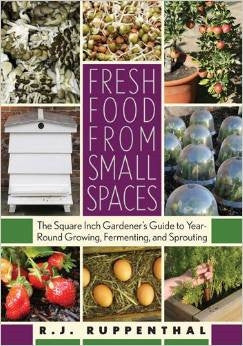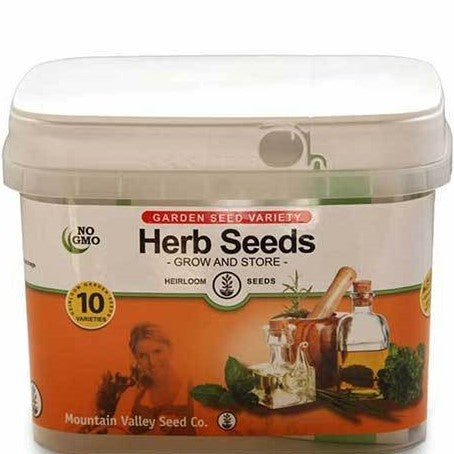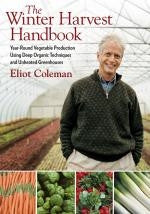Fresh Food from Small Spaces
"While the information in this book will benefit all those seeking to grow and prepare their own food at home, it is especially informative for people with only limited space. Ruppenthal covers every food I ever heard of and a whole bunch I never heard of, like water kimchi(!) that can be grown indoors or outdoors where there is not enough room for a regular garden. This is the perfect answer to the question many people are asking me: How can I take charge of my own life now that food prices are soaring when I hardly have space for a container-grown tomato or two? Reading Ruppenthal, I get a distinct feeling that one can grow enough food to survive on down in the cellar and out on the porch."
-Gene Logsdon, author of The Contrary Farmer and Small-Scale Grain Raising
Books on container gardening have been wildly popular with urban and suburban readers, but until now, there has been no comprehensive "how-to" guide for growing fresh food in the absence of open land. Fresh Food from Small Spaces fills the gap as a practical, comprehensive, and downright fun guide to growing food in small spaces. It provides readers with the knowledge and skills necessary to produce their own fresh vegetables, mushrooms, sprouts, and fermented foods as well as to raise bees and chickens—all without reliance on energy-intensive systems like indoor lighting and hydroponics.
Readers will learn how to transform their balconies and windowsills into productive vegetable gardens, their countertops and storage lockers into commercial-quality sprout and mushroom farms, and their outside nooks and crannies into whatever they can imagine, including sustainable nurseries for honeybees and chickens. Free space for the city gardener might be no more than a cramped patio, balcony, rooftop, windowsill, hanging rafter, dark cabinet, garage, or storage area, but no space is too small or too dark to raise food.
With this book as a guide, people living in apartments, condominiums, townhouses, and single-family homes will be able to grow up to 20 percent of their own fresh food using a combination of traditional gardening methods and space-saving techniques such as reflected lighting and container "terracing." Those with access to yards can produce even more.
Author R. J. Ruppenthal worked on an organic vegetable farm in his youth, but his expertise in urban and indoor gardening has been hard-won through years of trial-and-error experience. In the small city homes where he has lived, often with no more than a balcony, windowsill, and countertop for gardening, Ruppenthal and his family have been able to eat at least some homegrown food 365 days per year. In an era of declining resources and environmental disruption, Ruppenthal shows that even urban dwellers can contribute to a rebirth of local, fresh foods.





